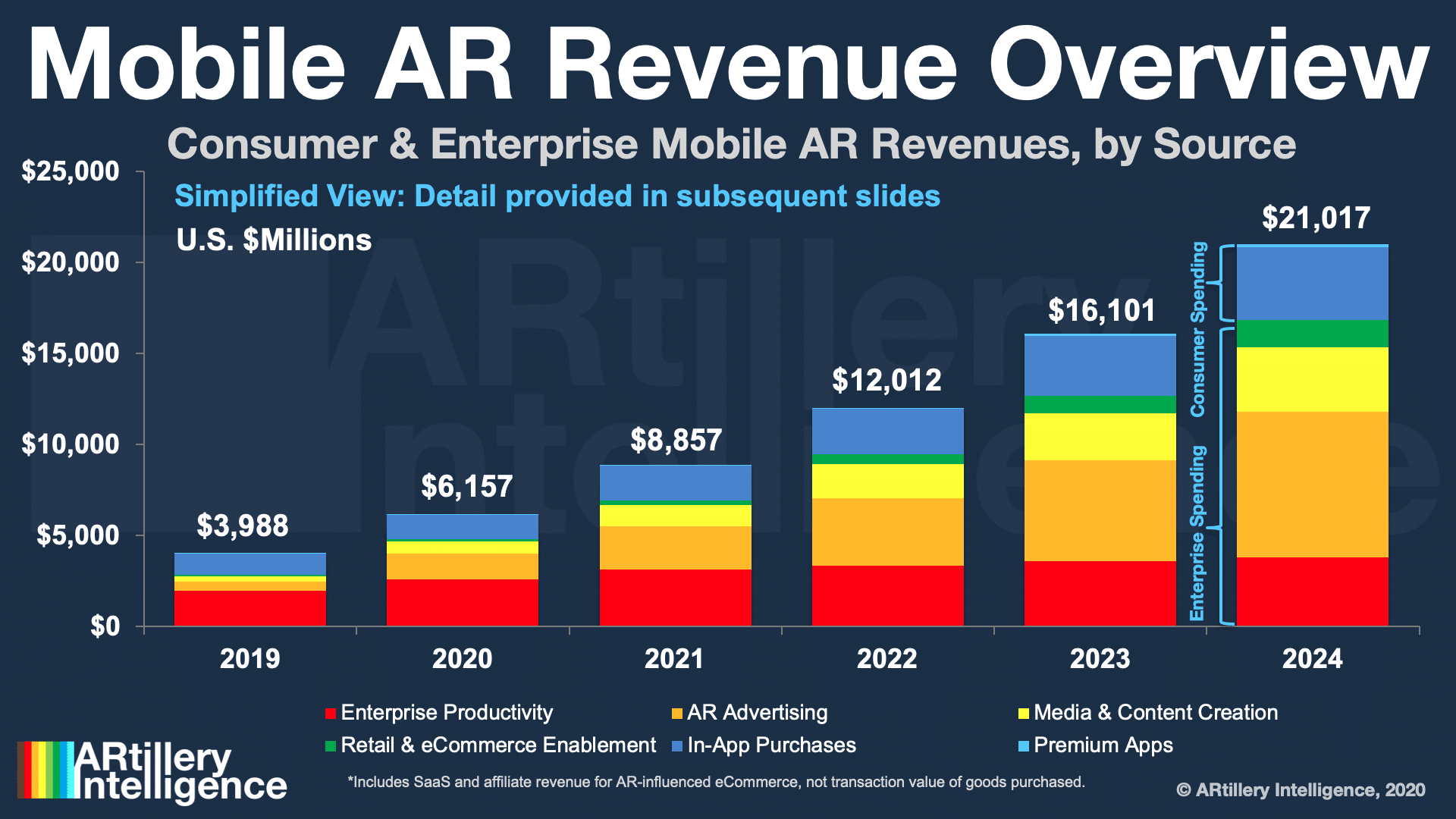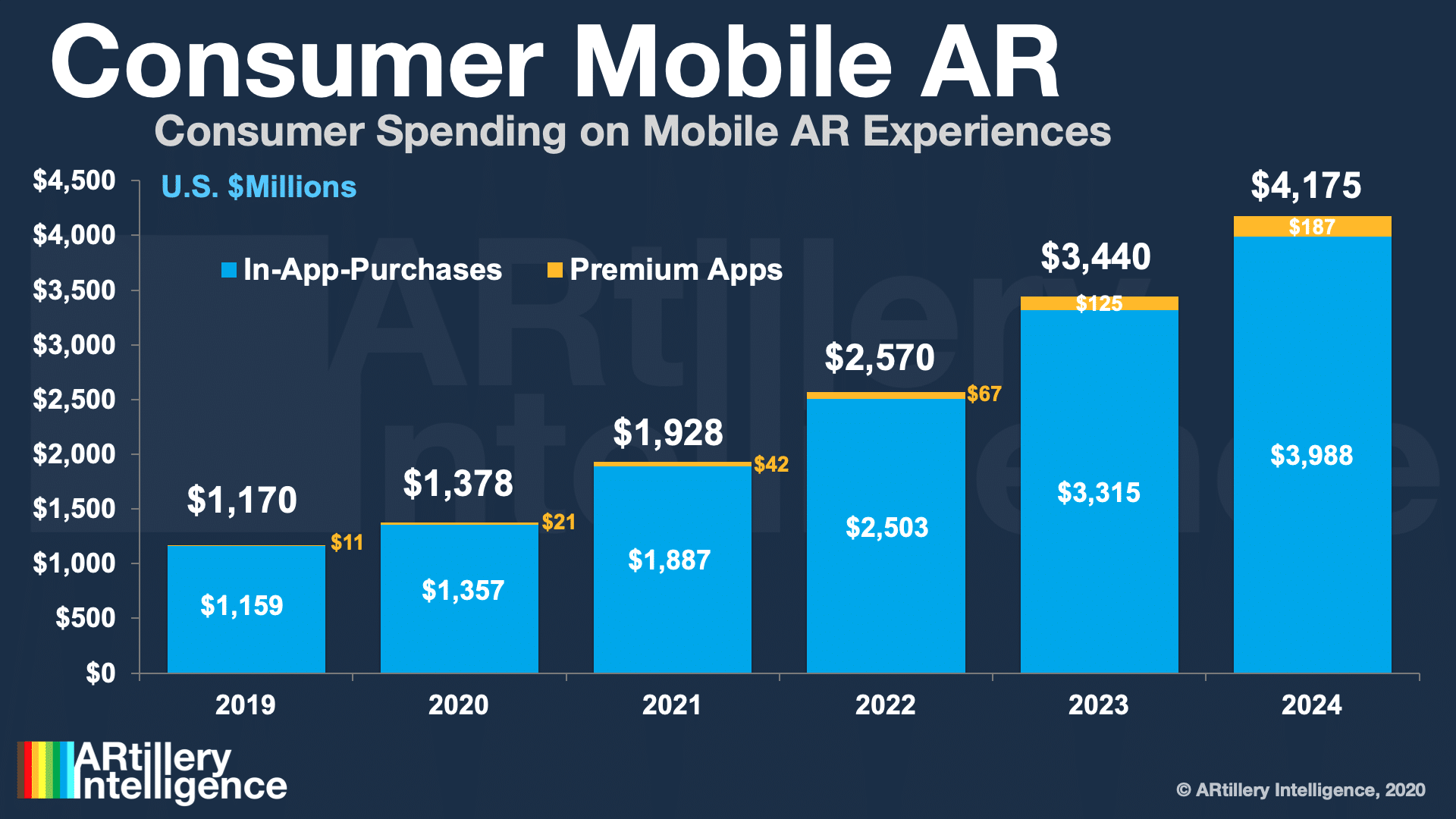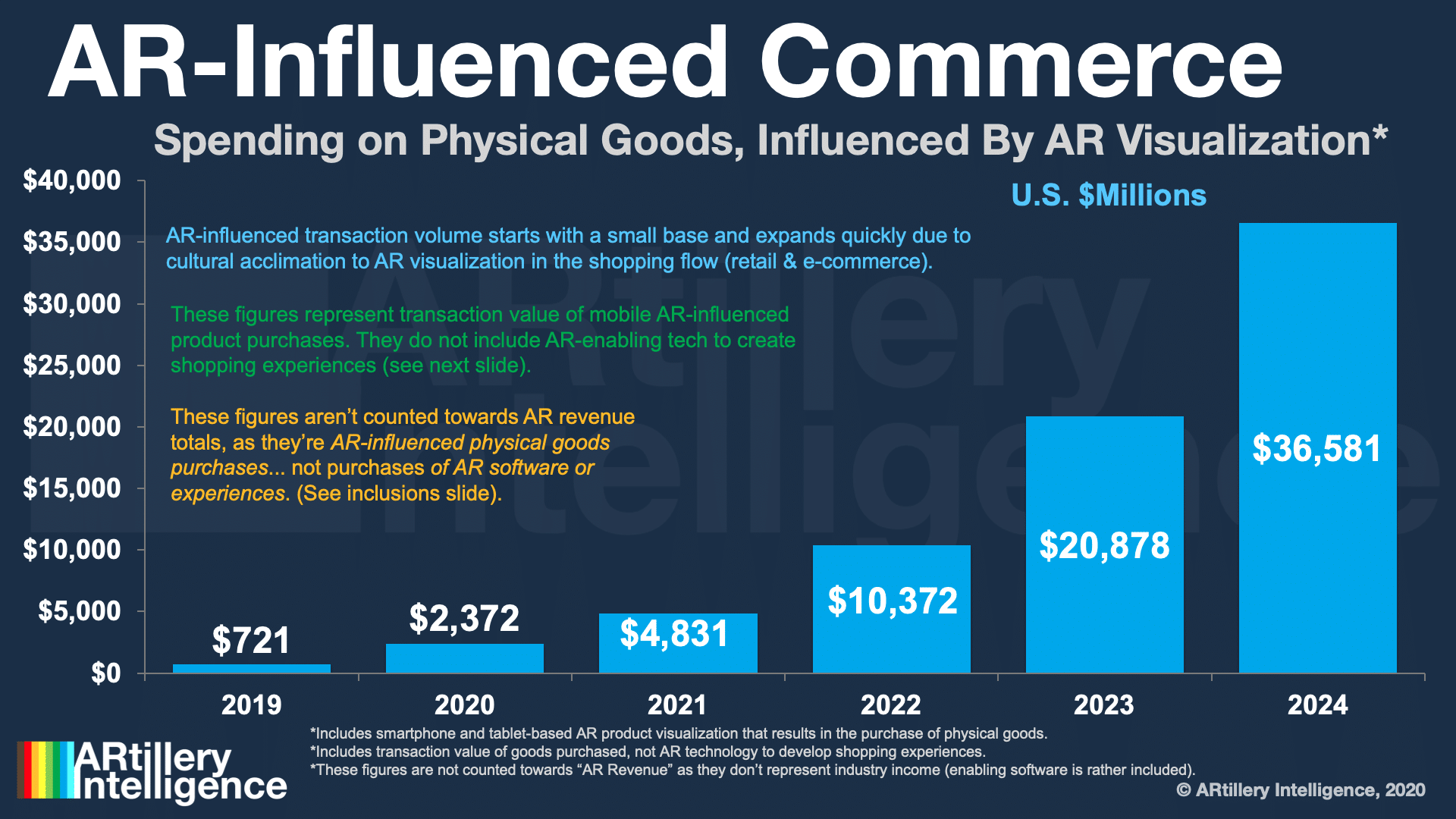
Like many analyst firms, one of the ongoing practices of AR Insider’s research arm ARtillery Intelligence is market sizing. A few times per year, it goes into isolation and buries itself deep in financial modeling. The latest such exercise zeroes in on mobile AR revenues.
This takes the insights and observations accumulated throughout the year and synthesizes them into hard numbers for spatial computing (see methodology and inclusions/exclusions). It’s all about a strong forecast model and lots of rigor in assembling reliable inputs.
So what did the forecast uncover? At a high level, global mobile AR revenue is projected to grow from U.S. $3.98 billion in 2019 to U.S. $21 billion in 2024, a 39 percent CAGR. This sum consists of mobile AR consumer and enterprise spending and their revenue subsegments.

Obtain or Enhance
Taking just one segment of the forecast, we’ll focus today on consumer spending. This includes any mobile AR software and experiences that consumers pay for (excluding mobile devices themselves). Consumer mobile AR spending is also subdivided by digital and physical goods.
Starting with digital goods this involves software to obtain or enhance digital experiences, including in-app purchases (IAP) and premium apps. Spending totaled $1.16 billion in 2019, growing to a projected $3.99 billion in 2024, a 28 percent compound annual growth rate.
This is led mostly by Pokémon Go’s IAP revenues, which are estimated to reach $1.2 billion this year. Pokémon Go in fact had its biggest revenue year to date in 2020 and is going strong, despite a pandemic whose restrictions detract significantly from the game’s migratory play.
Niantic pulled this off through ingenuity and quick work to modify the UX and accommodate for stationary play. Projecting forward, Niantic’s Real World Platform will bring location-based capability to other titles, which could amplify AR consumer spending and aggregate IAP revenue.

Informed or Influenced
Moving on to physical goods, these include consumer product purchases that are informed or influenced through AR product visualization. These will grow from $2.4 billion in 2020 to $36.6 billion by 2024, driven by brand apps, social lenses, visual search and — increasingly — Web AR.
The outer years of that outlook get into sizeable sums and steep growth. That’s partly because it grows from such a small base. Spending will also grow quickly due to the current pace of brand and consumer AR adoption, particularly as it relates to eCommerce’s Covid-era inflections.
But to put these figures into perspective, $36.6 billion in AR-assisted physical goods spending is 0.00073469387 of the $49 trillion in annual global consumer spending. So though it’s growing fast, it still has several decimal points to reach any semblance of ubiquity as a shopping tool.
Another disclaimer is that the transaction value of physical goods purchased using AR is tracked here, but doesn’t count towards AR revenue. AR’s role in the value chain is rather counted as spending on AR commerce enablement software (the green bars in the first chart above).

Quarantine-Friendly
The elephant in the room in all of the above is a global pandemic. As is the case across the global economy, mobile AR sectors will be impacted unevenly by ongoing global lockdowns. Given that software mostly fares well in shelter-in-place life, the impact on mobile AR will be mostly positive.
For example, quarantine-friendly consumer AR like social lenses are trending; and social distancing compels enterprise remote-AR support. Back to the above analysis on consumer spending, retail lockdowns are accelerating consumer acclimation to AR-assisted eCommerce.
Stepping back, ARtillery Intelligence’s position on AR revenue growth is best characterized as cautiously optimistic. Growth and scale will come, but slower than many industry proponents have thought, due partly to the pace of adoption and other signals that ARtillery Intelligence tracks.
Stay tuned for more forecast tidbits and insights over the coming weeks. Meanwhile, find out more about the market-sizing methodology or access the entire forecast here. There will be lots to unpack as the mobile AR market unfolds with combination of expected and unexpected outcomes.






